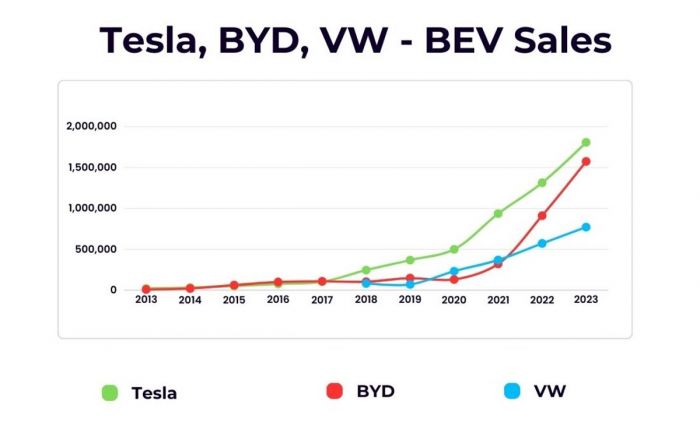The 2.3L Duratec is probably one of the most underrated engines of Ford in the modern era. It does not get the same recognition as its more powerful contemporaries under the American brand, but it sure does provide a reliable powerplant for vehicles that are meant for daily drives.
In this article, we will show you the things that you can expect from the engine such as its longevity, common problems, and key specifications for your easy reference, and perhaps so you can appreciate it more.

Key features and my opinion about the engine
- Production years:2001-2011
- Average lifespan of 2.3L Duratec:230,000-260,000 miles
- Fuel supply type:port injection
- Power range:153-178 hp
- Fuel efficiency:bad
- Engine block material:aluminum
- Engine reliability score:high
- The most common problems:oil consumption, chain stretching, phaser problems, no lifters.
Ford 2.3L Duratec Engine Lifespan
The 2.3L Duratec is designed to power Ford's compact cars up to its pickup trucks and utility vehicles. With that, the American automaker had reliability in mind when it developed the power unit in partnership with Mazda.
The fusion of these major players in the automotive industry coming from the east and the west has resulted in extending the lifespan of the engine to reach up to 130,000 miles on average. Some owners even flexed getting it over 300,000 miles with regular maintenance and minor parts replacement.
The figures are definitely impressive but some who have been caught up with the major problems that the engine is known for may say otherwise.
Most Common Problems that the Ford 2.3L Duratec is Known For
There have been recalls covering some Ford units equipped with the engine. By far, the problems enumerated in the notices didn't include any engine-specific issues.
According to the most common complaints centering on the Ford 2.3L Duratec though, the problems that are usually tied to this product are the following:
1. Timing Chain Premature Wear
The timing chain is an important component of the Ford 2.3L Duratec engine. It keeps the engine's valves in proper synchronization with the pistons, ensuring that the air-fuel mixture is correctly drawn into the cylinders and then expelled. However, the timing chain can become stretched or damaged, causing it to slip out of position over time. This can lead to a loss of power and efficiency, as well as increased emissions.
The timing chain is supposed to last over the entire life of the engine. Mechanics estimate it to go between 80,000 and 120,000 miles with regular maintenance. In the case, of the 2.3L Duratec though, a significant number of its owners claimed to have experienced problems with their timing chain earlier than the said numbers.
If your car begins to exhibit symptoms like noticeable loss of power or acceleration, engine misfires, rough idling, and/or check engine light getting illuminated on the dash, it may be indicative of premature timing chain wear.
If the problem is not addressed immediately, it can cause serious engine damage. The valves and pistons may collide, resulting in bent valves, damaged pistons, cracked cylinder heads, and damaged engine block. In extreme cases, the engine may seize up completely.
The possible factors that may lead to the premature wear of the timing chain include constantly low oil levels, dirty or contaminated oil, excessive engine heat, and normal wear and tear over time.
To fix the problem, the timing chain will need to be replaced. In some cases, other components such as the timing chain tensioner or guides may also need to be replaced. Depending on the extent of the damage, parts such as the pistons, valves, cylinder head, or engine block may have to be changed as well. In cases wherein the engine has already incurred extensive damage, it may need to be rebuilt or replaced.
2. Dirty Manifold Pressure (MAP) Sensor
The manifold pressure (MAP) sensor is a critical component of the Ford 2.3L Duratec engine. It is responsible for measuring the amount of air coming into the engine so that the correct amount of fuel can be injected. If the MAP sensor is not working properly, it can trigger a number of problems including reduced fuel economy, decreased power, and increased emissions.
There are several symptoms of MAP sensor malfunction in the Ford 2.3L Duratec engine. These include a drop in engine power, an increase in fuel consumption, and a decrease in acceleration. If these symptoms are not addressed immediately, they can lead to more serious problems such as engine damage.
There are several possible causes of MAP sensor malfunction in the Ford 2.3L Duratec engine. These include dirt build-up on the sensor, damage to the sensor, and a faulty wiring connection. The best way to prevent this problem is to regularly clean the MAP sensor and to routinely check the wiring and connections for any damage.
If the problem is only limited to dirt build-up in the sensor and the part may still be saved through cleaning, then there is no need to replace it. All the mechanic has to do is clean it using the appropriate cleaning solution and a brush.
In the case of damage, however, it is best to replace the MAP sensor with a new one. This is because damaged sensors can no longer accurately measure the amount of air coming into the engine, which can lead to further problems. Replacing the sensor is not a difficult task and can be done by any qualified mechanic.
Finally, if the problem is due to a faulty wiring connection, then the mechanic will need to check the wiring harness for any damaged or loose connections. Once the problem is fixed, the MAP sensor should start working properly again.
3. High Idle Control System
A good number of Ford 2.3L Duratec owners have confirmed that the engine tends to have high RPM (revolutions per minute) while idle. This may be indicative of some problems in the engine like a faulty mass airflow sensor, a dirty throttle body, and sticky or damaged throttle plates. However, most of the people who have complained about this kind of problem in this specific engine claimed to have found a cure for the issue by simply having their PCM flashed or recalibrated.
When the engine has high idle RPMs, it means that there's an imbalance in the air-to-fuel mixture. This will cause the car to stall when put in gear and can also cause loss of power while driving. The check engine light will also come on as a result of this problem.
If you're experiencing these symptoms, it's best to take your car to a mechanic so they can diagnose the problem and recommend the necessary repairs.
In the case of the 2.3L Duratec, the mechanic may only have to reflash the PCM governing the engine to meet the idle configuration recommended by Ford. However, if this method fails to fix the problem, a recalibration of the PCM may be needed, which will require the advanced skills of an experienced technician.
In other instances, simply cleaning the throttle body or replacing the mass airflow sensor will fix the issue if the problem is only limited there. However, if the throttle body and plates are damaged, they'll need to be replaced as well.
4. Others
Considering the age of the 2.3L Duratec by now, which is somewhere between 13 to 29 years, its owners may be bound to encounter problems that most engines at that stage are prone to like starting and overheating issues. Although these remain to be isolated cases in this type of engine, better come prepared in case you find yourself on the short end of the stick.
One of the most common issues preventing a Ford 2.3L Duratec engine from starting is low oil levels. If the oil level is too low, it can force the engine to seize up, preventing it from starting. Another is a faulty starter motor. If the starter motor is not working properly, it will not be able to turn the engine over. Likewise, a faulty battery can yield the same negative results. Meanwhile, overheating problems in the engine may start from a faulty thermostat, coolant leak, or clogged radiator.
If you notice any of these major hiccups in your 2.3L Duratec engine, it is important to have them checked by a mechanic as soon as possible.
Ford 2.3L Duratec Engine Key Specs
The Ford 2.3 L Duratec is also commonly referred to as the Duratec 23 or Mazda L engine. One of its alternate names points to its application in Mazda vehicles as well as the partnership of Ford with the said brand in developing the engine.
The 2.3L engine is naturally-aspirated with inline-four cylinders and has a longitudinal orientation. It utilizes a dual-overhead cam (DOHC) valve configuration, chain drive, and is made of aluminum heads and block.
In its stock configuration, the engine possesses a bore of 87.5 mm and a stroke of 94 mm. In addition, it has a compression ratio of 9:7.1.
Depending on its application, the engine can deliver up to 150 to 160 hp at 5,250 to 6,250 rpm and 152 to 156 lb-ft of torque at 3,750 to 4,250 rpm. The popular Ford models that carried it during its production phase were the Escape, Focus, Fusion, Ranger, Mariner, and Milan between 2001 to 2009 model years.
Conclusion
So far, we have mainly heard good things about the 2.3L Duratec. The quality and durability of the engine are evidenced by the fact that there are only a few references about its major issues from authority sites and reputable automotive publications.
Looking at the problems about the 2.3L Duratec that we managed to dig up during our search, all of them seem to be repairable as long as they are not neglected for a long time. Therefore, you should always watch out for the symptoms related to them which were discussed here. These will help you detect issues in their early stages and save you from the trouble that they may possibly bring in the long run.
About the authors
The CarAraC research team is composed of seasoned auto mechanics and automotive industry professionals, including individuals with advanced degrees and certifications in their field. Our team members boast prestigious credentials, reflecting their extensive knowledge and skills. These qualifications include: IMI: Institute of the Motor Industry, ASE-Certified Master Automobile Technicians; Coventry University, Graduate of MA in Automotive Journalism; Politecnico di Torino, Italy, MS Automotive Engineering; Ss. Cyril and Methodius University in Skopje, Mechanical University in Skopje; TOC Automotive College; DHA Suffa University, Department of Mechanical Engineering






Add comment